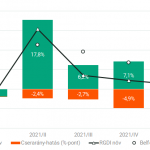Universities use ‘first in family’ or ‘first generation’ as an indicator to increase the diversity of their student intake, but little is known about whether it is a good indicator of disadvantage. We use nationally representative, longitudinal survey data linked to administrative data from England to provide the first comprehensive analysis of this measure. We employ parametric probability (logit) and non-parametric classification (random forest) models to look at its relative predictive power of university participation and graduation. We find that being first in family is an important barrier to university participation and graduation, over and above other sources of disadvantage. This association seems to operate through the channel of early educational attainment. Our findings indicate that the first in family indicator could be key in efforts to widen participation at universities.
Nem található esemény a közeljövőben.
A KRTK Közgazdaság-tudományi Intézet teljesítményéről A KRTK KTI a RePEc/IDEAS rangsorában, amely a világ közgazdaság-tudományi tanszékeit és intézeteit rangsorolja publikációs teljesítményük alapján, a legjobb ... Read More »

Tisztelt Kollégák! Tudományos kutatóként, intézeti vezetőként egész életünkben a kutatói szabadság és felelősség elve vezetett bennünket. Meggyőződésünk, hogy a tudomány csak akkor érhet el ... Read More »

Srí Lanka: a 2022-es gazdasági válság leckéje – A. Krueger Lessons from Sri Lanka Anne O. Krueger Jul 25, 2022 – Project Syndicate ... Read More »

A permanens válság korában élünk – J. Meadway We’re living in an age of permanent crisis – let’s stop planning for a ‘return ... Read More »

A 2021 végén, illetve 2022 elején tapaszalt 6, illetve 7%-os cserearányromlás brutális reáljövedelem-kivonást jelentett a magyar gazdaságból. A külső egyensúly alakulásával foglalkozó elemzések többnyire ... Read More »
